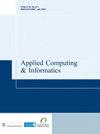基于重叠滑动窗口和组合特征的脑电信号情感识别系统
IF 4.9
Q1 COMPUTER SCIENCE, INFORMATION SYSTEMS
引用次数: 7
摘要
目的提出一种针对变长脑电图(EEG)数据的高效三维情绪识别模型。设计/方法/方法经典AMIGOS数据集由情绪、个性和情绪反应的其他生理方面的不同长度的多模态记录组成,用于对拟议的重叠滑动窗口(OSW)建模框架进行经验评估。使用傅里叶变换和小波变换分别提取两个特征:归一化带功率(NBP)和归一化小波能量(NWE)。利用一维(1D)和二维(2D)卷积神经网络(CNN)对单个和组合特征的唤醒、效价和优势(AVD)情绪进行预测。结果二维卷积神经网络(2D CNN)对AMIGOS数据集脑电图信号的准确率最高,AVD的准确率分别为96.63%、95.87%和96.30%,与其他现有的竞争方法相比,准确率至少提高了6%。目前的工作集中在较少探索的、复杂的AMIGOS(2018)数据集上,该数据集不平衡且长度可变。基于EEG情绪识别的工作在更简单的数据集上广泛可用。AMIGOS数据集面临的挑战如下:张量形式数据的处理;提出了一种针对不平衡和变长数据生成足够等长样本的有效方法。选择合适的机器学习/深度学习模型;提高了应用模型的精度。本文章由计算机程序翻译,如有差异,请以英文原文为准。
An overlapping sliding window and combined features based emotion recognition system for EEG signals
PurposeThe purpose of this study is to propose an alternative efficient 3D emotion recognition model for variable-length electroencephalogram (EEG) data.Design/methodology/approachClassical AMIGOS data set which comprises of multimodal records of varying lengths on mood, personality and other physiological aspects on emotional response is used for empirical assessment of the proposed overlapping sliding window (OSW) modelling framework. Two features are extracted using Fourier and Wavelet transforms: normalised band power (NBP) and normalised wavelet energy (NWE), respectively. The arousal, valence and dominance (AVD) emotions are predicted using one-dimension (1D) and two-dimensional (2D) convolution neural network (CNN) for both single and combined features.FindingsThe two-dimensional convolution neural network (2D CNN) outcomes on EEG signals of AMIGOS data set are observed to yield the highest accuracy, that is 96.63%, 95.87% and 96.30% for AVD, respectively, which is evidenced to be at least 6% higher as compared to the other available competitive approaches.Originality/valueThe present work is focussed on the less explored, complex AMIGOS (2018) data set which is imbalanced and of variable length. EEG emotion recognition-based work is widely available on simpler data sets. The following are the challenges of the AMIGOS data set addressed in the present work: handling of tensor form data; proposing an efficient method for generating sufficient equal-length samples corresponding to imbalanced and variable-length data.; selecting a suitable machine learning/deep learning model; improving the accuracy of the applied model.
求助全文
通过发布文献求助,成功后即可免费获取论文全文。
去求助
来源期刊

Applied Computing and Informatics
Computer Science-Information Systems
CiteScore
12.20
自引率
0.00%
发文量
0
审稿时长
39 weeks
期刊介绍:
Applied Computing and Informatics aims to be timely in disseminating leading-edge knowledge to researchers, practitioners and academics whose interest is in the latest developments in applied computing and information systems concepts, strategies, practices, tools and technologies. In particular, the journal encourages research studies that have significant contributions to make to the continuous development and improvement of IT practices in the Kingdom of Saudi Arabia and other countries. By doing so, the journal attempts to bridge the gap between the academic and industrial community, and therefore, welcomes theoretically grounded, methodologically sound research studies that address various IT-related problems and innovations of an applied nature. The journal will serve as a forum for practitioners, researchers, managers and IT policy makers to share their knowledge and experience in the design, development, implementation, management and evaluation of various IT applications. Contributions may deal with, but are not limited to: • Internet and E-Commerce Architecture, Infrastructure, Models, Deployment Strategies and Methodologies. • E-Business and E-Government Adoption. • Mobile Commerce and their Applications. • Applied Telecommunication Networks. • Software Engineering Approaches, Methodologies, Techniques, and Tools. • Applied Data Mining and Warehousing. • Information Strategic Planning and Recourse Management. • Applied Wireless Computing. • Enterprise Resource Planning Systems. • IT Education. • Societal, Cultural, and Ethical Issues of IT. • Policy, Legal and Global Issues of IT. • Enterprise Database Technology.
 求助内容:
求助内容: 应助结果提醒方式:
应助结果提醒方式:


